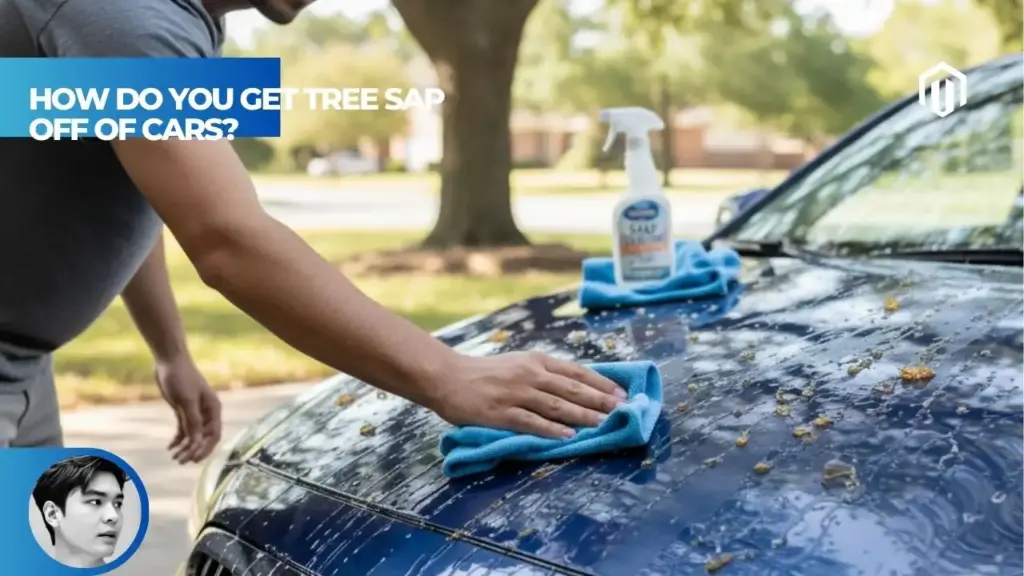You may also like:
- 【Explained】Why Is Your Car Accident Settlement Taking So Long? (And What You Can Do About It)
- 【Explained】How Long Does It Take to Settle a Car Accident?
- 【Explained】What Happens When Your Car Is Totaled But Still Drivable?
- 【Explained】Do You Need Full Coverage on a Financed Car? (The Lender Requirement Explained)
- 【Guide】Audi A4 Years to Avoid (And The 5 Best Years to Buy Instead)
An accident typically stays on your insurance record for 3-5 years affecting your rates, while DMV driving records maintain them for 3-10+ years depending on state laws and severity. The CLUE report, which insurers use for underwriting, keeps accident claims for 7 years, creating multiple overlapping timelines that impact your driving history and insurance costs differently.
If you’ve been in an accident, understanding these different record systems becomes crucial for managing insurance costs and maintaining your driving privileges. The “it depends” answer frustrates many drivers, but knowing exactly which record matters and when can save you thousands in premiums over time.

The “It Depends” Answer: Understanding Different Record Types
Insurance Record vs. Driving Record (MVR) Differences
Your accident appears on three distinct records, each serving different purposes and retention periods. The insurance record directly impacts your premiums and typically spans 3-5 years[1]. The Motor Vehicle Report (MVR) from your state DMV follows state-specific laws ranging from 3-10+ years. The CLUE report maintains claims history for 7 years regardless of location.
These records operate independently yet interconnect when determining your insurance rates. Insurance companies primarily focus on their internal records for rate-setting but verify information against DMV records and CLUE reports during underwriting. Understanding this multi-layered system helps explain why your next car purchase might face different insurance quotes from various companies.
According to Autvex insurance experts, the confusion often stems from assuming all records follow the same timeline. A driver might celebrate their accident “falling off” after 3 years, only to discover another insurer can still see it through the CLUE report for 4 more years.
CLUE Report (Comprehensive Loss Underwriting Exchange) Overview
The Comprehensive Loss Underwriting Exchange, managed by LexisNexis, serves as the insurance industry’s central database for claims history. This report contains 7 years of claims data including dates, types of loss, amounts paid, and claim status[2]. Over 95% of auto insurers contribute to and access this database when evaluating new customers.
Your CLUE report includes more than just accidents. It tracks all insurance claims, inquiries that resulted in claims, and even claims filed by previous owners of vehicles you now own. The report shows:
- Policy numbers and insurance companies involved
- Claim dates and types (collision, comprehensive, liability)
- Payment amounts under each coverage
- Current status (open or closed)
The 2023 launch of CLUE Auto 360 expanded reporting to include police records and additional data sources, providing insurers with an even more comprehensive view of vehicle damage history beyond just insurance claims.
Which Record Matters Most for Your Rates
For immediate rate impact, your insurance company’s internal record matters most, typically affecting premiums for 3-5 years[3]. However, when shopping for new coverage, the CLUE report becomes critical since all insurers can access your 7-year claims history during underwriting.
| Record Type | Primary Impact | Duration | Who Uses It |
|---|---|---|---|
| Insurance Record | Premium rates | 3-5 years | Current insurer |
| CLUE Report | New policy quotes | 7 years | All insurers |
| DMV Record (MVR) | License status | 3-10+ years | State, employers |
Your DMV record primarily affects driving privileges and may trigger license suspension based on point accumulation, but has less direct impact on insurance rates unless it shows patterns of violations or major infractions like DUI.
Insurance Record: The 3-5 Year Rule
Insurance Surcharge Period Explained
The surcharge period represents when insurers actively increase your premiums due to an accident. Most companies apply surcharges for 3-5 years from the accident date, not from claim resolution[3]. This period varies by insurer, with some extending to 5 years for severe accidents or multiple claims.
During the surcharge period, at-fault accidents typically increase premiums by 20-40%, translating to $400-800 annually for the average driver. The surcharge usually decreases each year of clean driving, with the largest reduction occurring after year three when many insurers stop considering the accident for rating purposes.
Not-at-fault accidents may still trigger smaller surcharges of 10-20% with certain insurers, particularly if you’ve had multiple not-at-fault incidents suggesting higher risk exposure regardless of fault.
How Long Does an Accident Affect Insurance Rates
Insurance rate impacts follow a predictable pattern over the 3-5 year period. Year one sees the highest surcharge, often 30-45% above your pre-accident rate. By year three, this typically drops to 10-15% as the accident ages. Most insurers completely remove the surcharge after 3 years for minor accidents, while major incidents may affect rates for the full 5 years[4].
The actual duration depends on several factors:
- Claim severity: Minor fender-benders clear faster than injury accidents
- Fault determination: At-fault accidents last longer than not-at-fault
- Your driving history: First accidents may be forgiven or reduced sooner
- State regulations: Some states limit surcharge duration
Real-world example: A driver with a 2025 BMW 3 Series who caused a $5,000 damage accident saw premiums increase from $1,400 to $1,960 annually. After three years of clean driving, rates dropped back to $1,500, nearly pre-accident levels.
Insurance Rate Increase After Accident Timeline
Understanding the timeline helps manage expectations and budget for increased costs. The rate increase typically begins at your next renewal after the accident, not immediately. If your accident occurs in January but your policy renews in July, you’ll see normal rates until that July renewal.
Year-by-year breakdown:
- Year 0-1: Maximum surcharge (25-45% increase)
- Year 1-2: Slightly reduced surcharge (20-35% increase)
- Year 2-3: Further reduction (10-25% increase)
- Year 3-4: Minimal or no surcharge with many insurers
- Year 4-5: Only severe accidents still surcharged
- Year 5+: Clean slate with most insurers
Some insurers offer “accident forgiveness” for first accidents, eliminating surcharges entirely. However, while your current insurer may forgive, the accident still appears on your CLUE report when shopping for new coverage.
Driving Record (MVR): The 3-10+ Year Rule
State-Specific Driving Record Duration
State DMV policies create massive variation in how long accidents remain on official driving records. California maintains records for 3 years, while Michigan keeps them for 7 years, and some states retain serious accidents for 10+ years or permanently[5].
| State | Minor Accident | Major Accident | DUI Accident |
|---|---|---|---|
| California | 3 years | 3 years | 10 years |
| Texas | 3 years | 5 years | Lifetime |
| New York | 3 years | 4 years | 10 years |
| Florida | 3 years | 5 years | 75 years |
| Illinois | 4-5 years | 5 years | Lifetime |
Points associated with accidents follow different timelines. South Carolina reduces points by half after one year and removes them after two years, while other states maintain full point values for the entire retention period.
Minor Accident on Record vs. Major Violations
The distinction between minor and major accidents significantly impacts retention periods. Minor accidents involving property damage under $1,000-2,000 (varies by state) typically remain for 3 years. Major accidents involving injuries, fatalities, or DUI stay much longer—often 7-10 years minimum[5].
Classification criteria include:
- Minor: Property damage only, no injuries, under state threshold
- Major: Any injury, DUI involvement, hit-and-run, criminal charges
- Serious: Fatalities, felony charges, multiple vehicles
Some states differentiate between “reportable” and “non-reportable” accidents. Parking lot fender-benders under $1,000 might not appear on MVRs at all, while accidents requiring police reports always get recorded regardless of damage amount.
How Many Years Does an Accident Stay on Your License
Your driver’s license record, distinct from your driving record, primarily tracks points that could lead to suspension. While the accident itself might remain on your MVR for years, the associated points often expire sooner—typically 2-3 years in most states.
Point accumulation triggers license consequences:
- 6-8 points: Warning letter
- 8-12 points: License suspension (30-90 days)
- 12+ points: Extended suspension or revocation
Defensive driving courses can remove 2-4 points in many states, effectively reducing accident impact on your license status. Some states allow point reduction once per year, others every three years.
The CLUE Report: The 7-Year Rule
LexisNexis CLUE Report Explained
LexisNexis maintains the CLUE database as a comprehensive record of insurance claims across all participating insurers. This 7-year repository contains detailed information about every claim filed, regardless of size or fault determination[2]. Unlike DMV records that vary by state, CLUE reports maintain consistent 7-year retention nationwide.
The report captures extensive details beyond basic accident information. It includes weather conditions at time of loss, specific vehicle damage locations, repair estimates versus actual payments, and even claims that were filed but never paid. This granular data helps insurers assess risk patterns and verify application accuracy.
Accessing your CLUE report annually helps identify errors before they impact insurance shopping. According to Autvex data, approximately 25% of CLUE reports contain inaccuracies that could affect premiums if left uncorrected.
Car Insurance Claims History Tracking
CLUE tracking goes beyond simple accident recording. Every interaction resulting in a claim gets logged, creating a comprehensive picture of your insurance behavior. The system tracks claim frequency, severity patterns, and even suspicious timing that might indicate fraud.
The database records:
- Claims filed but withdrawn (still visible for 7 years)
- Zero-payment claims (glass repairs, towing)
- Multiple claims for same incident (different coverages)
- Claims on vehicles you previously owned
Insurance companies analyze patterns within your CLUE history. Three small claims over 5 years might trigger higher rates than one large claim, as frequency suggests ongoing risk regardless of individual claim size.
How Many Years Does an Accident Stay on Your CLUE Report
The strict 7-year retention period begins from the date of loss, not claim filing or resolution[6]. If your accident occurred January 1, 2025, it remains visible until January 1, 2032, regardless of when you filed the claim or received payment.
Unlike credit reports that remove negative items after disputes, CLUE reports rarely remove valid claims before the 7-year mark. You can add consumer statements explaining circumstances (like not-at-fault status), but the claim itself remains visible to all insurers accessing the report.
Special circumstances affecting CLUE retention:
- Comprehensive claims (theft, vandalism): Full 7 years
- Glass-only claims: 7 years but often not surcharged
- Not-at-fault with subrogation: Shows as $0 payout after recovery
- Fraudulent claims: May remain permanently with fraud flags

At-Fault vs. Not-At-Fault Accident Record Impact
At-Fault Accident Surcharge Duration
At-fault accidents trigger the most significant and longest-lasting insurance impacts. Surcharges typically last the full 3-5 years, with average premium increases of 30-40% in year one[4]. The total cost over the surcharge period often exceeds $2,000-4,000 for a single at-fault accident.
Insurance companies use fault determination from police reports, claim investigations, and state laws to assign responsibility percentages. In comparative negligence states, being 51% or more at fault typically triggers full surcharges, while lesser fault percentages may result in reduced surcharges.
Multiple at-fault accidents create compounding effects. A second at-fault accident within 3 years can trigger non-renewal or placement in high-risk pools with premiums 100-300% above standard rates.
Does a Not-At-Fault Accident Go on Your Record
Yes, not-at-fault accidents appear on all three records—DMV, insurance, and CLUE—but with different impacts. While they’re recorded, most insurers don’t surcharge for true not-at-fault accidents where the other party is 100% liable and their insurance pays all damages[1].
However, certain situations complicate not-at-fault status:
- Hit-and-run accidents where you use your collision coverage
- Uninsured motorist claims requiring your coverage
- Disputed fault with conflicting police/insurance findings
- Multiple not-at-fault accidents suggesting risk patterns
Some insurers apply small surcharges (5-10%) even for not-at-fault accidents, particularly if you’ve had several within a short period. They argue that frequent involvement in accidents, regardless of fault, indicates higher risk exposure.
Reportable Accident Criteria
Not all accidents must be reported to DMV or insurance, and understanding thresholds can prevent unnecessary record impacts. State reporting requirements typically mandate DMV notification for accidents involving:
| Reporting Trigger | Typical Threshold | Consequence if Unreported |
|---|---|---|
| Property damage | $1,000-2,000 | License suspension |
| Any injury | Immediate | Criminal charges possible |
| Death | Immediate | Felony charges likely |
| Government property | Any amount | Mandatory prosecution |
Insurance reporting presents different considerations. While policies require reporting all accidents, many drivers choose not to report minor incidents where damage is below deductibles. However, if the other party later files a claim, failure to report promptly can result in coverage denial.
Factors That Influence Duration
Severity of the Accident Impact
Accident severity dramatically affects retention periods across all record types. Minor property damage accidents typically follow minimum retention periods, while severe accidents involving injuries or significant damage extend timelines substantially[3].
Severity classifications insurers use:
- Minor: Under $2,500 damage, no injuries
- Moderate: $2,500-10,000 damage or minor injuries
- Major: Over $10,000 damage or serious injuries
- Severe: Fatalities, permanent disabilities, total losses
A minor parking lot incident might disappear from insurance surcharging after 3 years, while a major injury accident affects rates for 5+ years and remains on CLUE reports impacting future insurance shopping for the full 7 years.
State Laws and Regulations
State insurance regulations create significant variations in accident record treatment. Some states prohibit surcharging for not-at-fault accidents, while others allow insurers complete discretion. California prohibits surcharges for accidents under $1,000, while Michigan allows indefinite surcharging for major accidents[7].
State-specific regulations affecting records:
- “First accident forgiveness” mandates (Connecticut, others)
- Surcharge limitation laws (Massachusetts caps at 5 years)
- Point system variations (New Jersey’s complex system vs. simple systems)
- Record expungement options (Some states after clean driving periods)
Understanding your state’s specific laws helps predict record impacts. Consulting Autvex’s state-specific guides provides detailed information for your jurisdiction.
Insurance Company Policies
Individual insurer policies create additional variation beyond state requirements. While one company might surcharge for 5 years, another stops after 3 years for identical accidents. Company policies depend on their risk models, target markets, and competitive strategies.
Progressive might offer accident forgiveness after 3 years of coverage, while State Farm requires 5 years. Some insurers ignore accidents over 3 years old when accepting new customers, while others consider the full 5-year history. These differences can create premium variations of 50% or more for the same driver.
Company-specific factors include:
- Loyalty rewards reducing accident impact over time
- Claims-free discounts restoration timelines
- Accident forgiveness eligibility and limits
- Risk tier assignment duration
Points and Additional Considerations
How Long Do Points Stay on Your License
Point duration varies significantly by state, typically ranging from 2-5 years for most violations. However, points from accident-related violations often follow different rules than simple speeding tickets. In South Carolina, points reduce by half after one year and expire after two years, while New York maintains points for 18 months from violation date[8].
Point reduction strategies vary by state:
- Defensive driving courses: Remove 2-4 points
- Time-based reduction: Automatic halving or removal
- Good behavior credits: Point removal for clean driving
- Voluntary driver improvement: Proactive point reduction
The relationship between points and insurance differs from company to company. While DMV points might expire after 2 years, insurers may still surcharge based on the underlying violation for their full 3-5 year lookback period.
Driving Record Points for Accident
Accidents themselves rarely assign points directly—it’s the associated violations that generate points. Common accident-related point assignments include:
Typical point values by violation:
- At-fault property damage: 2-3 points
- Following too closely: 3-4 points
- Failure to yield: 3-4 points
- Reckless driving: 4-6 points
- DUI accident: 6-12 points
Multiple violations from one accident can stack, potentially triggering immediate license suspension. A DUI accident might generate 12+ points between the DUI charge, reckless driving, and accident involvement.
SR-22 Insurance Requirements
Serious accidents often trigger SR-22 requirements—a certificate proving you maintain minimum liability insurance. SR-22s typically last 3 years but can extend to 5 years for severe violations. This requirement appears on your DMV record and substantially increases insurance costs beyond normal accident surcharges.
SR-22 triggers include:
- DUI-involved accidents
- Uninsured accidents
- Multiple at-fault accidents within 3 years
- Accidents while driving suspended
- Leaving accident scene
The SR-22 itself costs $15-50 to file, but the high-risk classification can triple insurance premiums. Maintaining continuous coverage becomes critical—any lapse restarts the SR-22 period and may trigger license suspension.
How to Manage Your Accident Record
How to Get an Accident Off Your Record
Complete removal of accidents from records is rarely possible before standard expiration periods. However, several strategies can minimize impact:
DMV record management:
- Complete defensive driving to offset points
- Request expungement after clean driving period (state-specific)
- Challenge inaccuracies through DMV hearing process
- Petition for early removal of minor incidents
Insurance record strategies:
- Shop for new coverage after 3 years
- Request re-rating with current insurer
- Bundle policies for accident forgiveness
- Maintain continuous coverage to show stability
CLUE report corrections:
- Dispute inaccurate information with LexisNexis
- Add consumer statements explaining circumstances
- Correct fault determinations if changed
- Remove duplicate or erroneous entries
Success rates vary, but drivers with clean records following an accident have better chances of early forgiveness or reduced surcharging.
Can You Pay to Have an Accident Removed
Direct payment to remove accidents from official records is not possible and anyone offering such services is likely fraudulent[1]. However, legitimate options exist to minimize accident impact through proper channels.
Legal alternatives include:
- Traffic school to prevent point assessment ($50-200)
- Defensive driving courses for point reduction ($25-100)
- Legal representation to challenge violations ($500-2,500)
- Expungement petitions where allowed ($200-500 filing fees)
Some states allow record sealing for employment purposes after specified periods, though insurance companies can still access sealed records for underwriting. California offers record expungement for certain violations after successful probation completion.
Accident Forgiveness Programs
Accident forgiveness prevents rate increases after your first at-fault accident, though the accident still appears on records. Most major insurers offer this feature, either earned through loyalty or purchased as an add-on costing $15-40 monthly.
| Insurer | Eligibility | Cost | Limitations |
|---|---|---|---|
| Allstate | 5 years clean | Included/Add-on | One accident per policy |
| Progressive | 3 years customer | $15-30/month | Small accidents only |
| State Farm | Varies by state | Merit-based | Not available everywhere |
| Liberty Mutual | Immediate | $60-120/year | First accident only |
Important limitations:
- Forgiveness doesn’t transfer between insurers
- Accidents still appear on CLUE reports
- Major accidents may exceed forgiveness limits
- Second accidents trigger full surcharging
Autvex analysis shows accident forgiveness saves average drivers $600-1,200 over three years, making the add-on cost worthwhile for many drivers.

Key Takeaways
- Accidents affect three separate records with different timelines: insurance (3-5 years), DMV (3-10+ years), and CLUE (7 years)
- Insurance surcharges typically last 3-5 years but start decreasing after year 3 with clean driving
- CLUE reports retain all claims for exactly 7 years regardless of fault or severity
- State laws create huge variations in DMV record retention from 3 years to lifetime
- At-fault accidents impact rates 30-40% while not-at-fault may still affect premiums slightly
- Points expire in 2-3 years in most states but underlying violations remain longer
- Accident forgiveness only works with current insurer and doesn’t remove CLUE report entries
Next Steps
Start by requesting your free annual CLUE report from LexisNexis to understand exactly what insurers see. Review for accuracy and dispute any errors immediately—25% contain mistakes that could cost you hundreds in premiums. Order your state DMV record to verify point status and ensure all information is correct.
If your accident is approaching the 3-year mark, begin shopping for new insurance quotes. Many insurers stop surcharging after 3 years while your current company might maintain higher rates. Compare at least 5 quotes, specifically asking about their accident lookback periods and forgiveness programs.
Consider defensive driving courses if your state allows point reduction—even without current points, completion might qualify you for additional discounts. For drivers facing SR-22 requirements or multiple accidents, consult with an insurance broker specializing in high-risk coverage to find the most affordable options.
Set calendar reminders for when your accident ages off each record type. Three years for potential insurance shopping, five years for maximum rate improvement, and seven years for complete CLUE report clearance. Document all clean driving periods to demonstrate improved risk profile when seeking better rates.
Frequently Asked Questions
How long does an at-fault accident stay on your record?
At-fault accidents typically remain on insurance records for 3-5 years affecting rates, while DMV records may retain them 3-10 years depending on state and severity. The CLUE report maintains the claim for exactly 7 years regardless of fault.
Does a not-at-fault accident go on your record?
Yes, not-at-fault accidents appear on all three records—DMV, insurance, and CLUE—but typically don’t trigger surcharges with most insurers if the other party is 100% liable and their insurance covers all damages.
How long will an accident raise my insurance rates?
Most insurers apply surcharges for 3-5 years after an at-fault accident, with rates gradually decreasing each year of clean driving. The highest increases occur in year one (30-40%), reducing to 10-15% by year three.
Can you pay to have an accident removed from your record?
No, you cannot pay to directly remove accidents from official records. However, you can take defensive driving courses to reduce points, petition for expungement where allowed, or add explanatory statements to CLUE reports.
How many years does an accident stay on your CLUE report?
Accidents and related claims remain on CLUE reports for exactly 7 years from the date of loss, accessible to all insurance companies during underwriting regardless of fault determination or claim payout.
Is it different for my driving record (DMV) vs. my insurance record?
Yes, DMV records follow state laws (3-10+ years) and affect license status, while insurance records typically track 3-5 years for rating purposes. CLUE reports maintain a separate 7-year history used during insurance shopping.
References
- Folkman Law. (2025). When Does a Car Accident Fall Off Your Insurance Record? https://folkmanlaw.com/2025/04/when-does-a-car-accident-fall-off-your-insurance-record/
- Bankrate. (2025). What Are CLUE Reports in Insurance? https://www.bankrate.com/insurance/homeowners-insurance/clue-report/
- Tyson Mutrux. (2025). How Long Does a Car Accident Stay on Your Insurance Record in Missouri. https://tysonmutrux.com/blog/how-long-does-a-car-accident-stay-on-your-insurance-record-in-missouri-mutrux-firm-injury-lawyers/
- Reyes Law. (2025). How Long Does an Accident Stay on Your Insurance? https://www.reyeslaw.com/blog/how-long-does-an-accident-stay-on-your-insurance/
- California DMV. (2023). Retention of Driver Record Information. https://www.dmv.ca.gov/portal/driver-education-and-safety/educational-materials/fast-facts/retention-of-driver-record-information-ffdl-15/
- LexisNexis Risk Solutions. (2024). LexisNexis C.L.U.E. Auto. https://risk.lexisnexis.com/products/clue-auto
- Personal Injury Law California. (2025). How Long Does a Car Accident Stay on Your Record in California. https://personalinjurylawcal.com/faqs/how-long-does-a-car-accident-stay-on-your-record/
- South Carolina DMV. (2023). Points System. https://www.scdmvonline.com/Driver-Services/Points-System

I am a senior automotive analyst at Autvex. Expert vehicle evaluations, in-depth reviews, and objective analysis helping readers make informed automotive decisions with years of industry experience.









